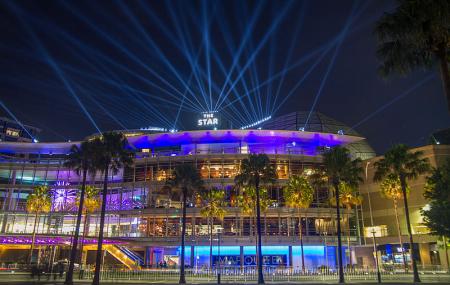Theatre Casino Sydney
Enmore Theatre: Sydney, Australia Open 1 Entrance Cinema: The Entrance, Australia Open 2 Event Cinemas: Sydney, Australia Open 15. Sydney Lyric plays host to large scale musicals, theatre productions, concerts, opera and ballet. Formerly the Lyric Theatre, the venue changed to its current name in late 2011 The Sydney Lyric Theatre is one of Sydney’s largest Theatrical spaces and its home is the Star City casino on Sydney harbour. This Australian icon sits on Bennelong Point and is Sydney’s premiere venue for classical and contemporary music, opera, theatre and dance. As peaceful as it looks now, the House had a. The Victory Theatre was a rebuild, in 1939, of the former Empress Theatre that started life as the Colonial No.2 in 1910. The Victory was one of only three theatres in Sydney with a strong Expressionist interior of indirect lighting; its exterior being Art Deco in style. It was demolished in 1984. File size 4.5MB.
articles - social / experiential
Person-environment conditions that inspired regulatory and other changes to occur in building design from the 19th into the middle 20th centuries: The case of theatre design.
Ross Thorne
25 pages (illustrated)
Originally published in 'People and Physical Environment Research', Number 57, 2002, pp.39-62.
Fires and other catastrophes in theatres, where people were killed, initiated over time a number of official inquiries that resulted in improved regulations for the safety and comfort of patrons. A number of British and Australian examples are provided.
This same article is also listed under Human Factors in Design.
File size 7.4MB
Distributing Popular [Movie Film] Culture by Rail:
The case of the decade of the 1950s in New South Wales.
Ross Thorne
14 pages (illustrated)
Paper presented to the National Railway Heritage Conference, Tamworth, September 2005. Film-hire documents found in a former country cinema were organised into a database for the decade of the 1950s. This paper looks at how many films and film-related material were sent between towns or back to Sydney each year by rail (before the unrelated occurrences of television and the development of road transport).
File size 3.4MB
Cinema as “Place”: The case of the picture theatres in a group of towns and villages in the Central West of New South Wales.
Kevin Cork

13 pages (illustrated)

This article is included for its importance to cinema research, being the first known to use extensive qualitative research, rather than occasional anecdotes, to describe the experience of attending local cinemas before television. It demonstrates the social importance of cinema at the time. The article supplements the one by Kevin Cork and Ross Thorne on cinema admissions.
File size 6MB
The visual and aural environment as part of the ‘presentation’ used to attract audiences to picture theatres, circa 1910 to 1950.
Ross Thorne
19 pages (illustrated).
Originally published in People and Physical Environment Research, Number 58-60, 2006, pp. 68-86.
Location, the quality of the design of the theatre buildings, service to the patrons and stage shows often contributed more to the success of a theatre than the quality of the films shown. This paper traces these elements of “presentation” in the USA and Australia.
File size 4.3MB
The Environmental Psychology of Theatres and Movie Palaces.
Ross Thorne
23 pages (illustrated).
Originally published in Environmental Perspectives, Ethnoscapes Vol. 1, Aldershot UK: Avebury.
Architects of the movie palaces of the 1920s, in attempting to communicate designs that would be appreciated by the masses, were conscious of the effects of colour and decoration on people’s moods. They described their work in elementary “psychological” terms. Recounting their writings has implications for the meaning of architecture today.
File size 3.0MB
articles - specific theatre & cinema buildings
The Mayfair Theatre (Sydney): a photo essay
Ross Thorne

12 pages; 25 illustrations.
Previously unpublished
From carriage works to athletic club (1902) then Brennan’s National Amphitheatre (1906), and a rebuild as the National in 1919, and revamp in1934, the Mayfair Theatre became a venue for blockbuster films and finally, completed its theatrical existence with ‘live’ plays and small musicals until its sale in 1980. The colour photographs were taken sometime around the mid-1970s.
File size 4MB
Melbourne’s Lost Theatres (parts 1 & 2)
Ross Thorne
6 pages; 8 illustrations
Originally published in Theatre Australia, May & July, 1978.
Melbourne’s first theatre was opened in 1841, but the first substantially built venue came in 1845. Ten years later the forerunner of the Princess was built and a most ambitious Theatre Royal in Bourke Street. There was a prefabricated iron theatre imported from England, the Opera House that saw vaudeville, the Bijou and the Kings Theatre that was a melodrama playhouse until its transformation into a cinema.
Includes cross section illustrations of two theatres, plus photographs and drawings
File size 3.7MB
Sydney’s Lost Theatres: the first 100 years (parts 1 & 2)
Ross Thorne
5 pages; 12 illustrations
Originally published in Theatre Australia, August & September, 1979.
In 1796 Sydney saw its first theatre, used only occasionally. The first “permanent” theatre opened in 1833 on the site of Dymocks book store building (George Street).
The article then describes the Royal Victoria (Pitt Street), a multi-named venue in York Street and the Opera House, also in York Street, the Gaiety, Criterion and Her Majesty’s (Pitt Street), Palace, Alhambra, Lyceum, Adelphi and St James – all gone. A map of Sydney shows over 20 theatres that have all disappeared.
File size 3.7MB
Palace Theatre, Sydney
Ross Thorne
7 pages; 19 illustrations
Previously unpublished
Palace Theatre (of Varieties) opened in 1896, it being designed in a rather voluptuous eastern style, then popular with vaudeville and variety theatres in Britain and the USA.
The auditorium was rebuilt in 1923 in a rich classical style – demolished in 1970.
It was an intimate theatre, much liked for plays.
File size 3.2MB
Hoyts Entertainment Centre, Sydney
Ross Thorne
9 pages; 20 illustrations

Previously unpublished
Hoyts Theatres Ltd, in the early 1970, decided to build the largest multi-plex cinema complex in Australia in George Street, Sydney. It was to provide a range of facilities from bookshop, pin-ball parlour, to bar.
The author describes his involvement through his being a joint consultant with psychologist, Dr. Terry Purcell to advise Hoyts on how to sign-post the seven cinemas for patrons.
The rather gaudy complex was opened in December 1976, and has been so-altered over the following 36 years that it can be classified as “lost”.
File size 6.17 MB
Victory Theatre, Sydney
Ross Thorne
7 pages; 16 illustrations
Previously unpublished
The Victory Theatre was a rebuild, in 1939, of the former Empress Theatre that started life as the Colonial No.2 in 1910.
Theatre Casino Sydney Hotel
The Victory was one of only three theatres in Sydney with a strong Expressionist interior of indirect lighting; its exterior being Art Deco in style.
Theatre Casino Sydney Casino
It was demolished in 1984.
File size 4.5MB